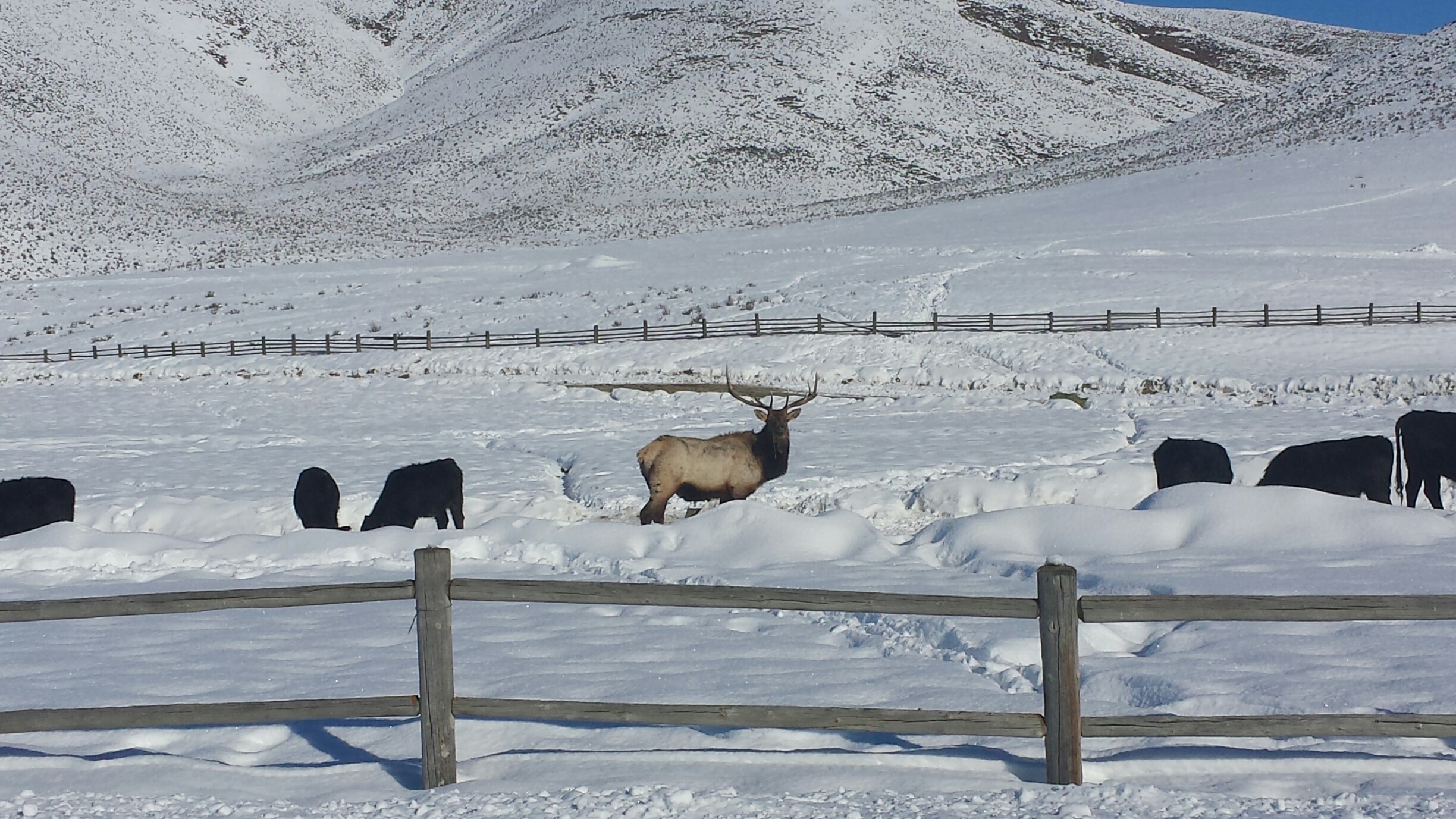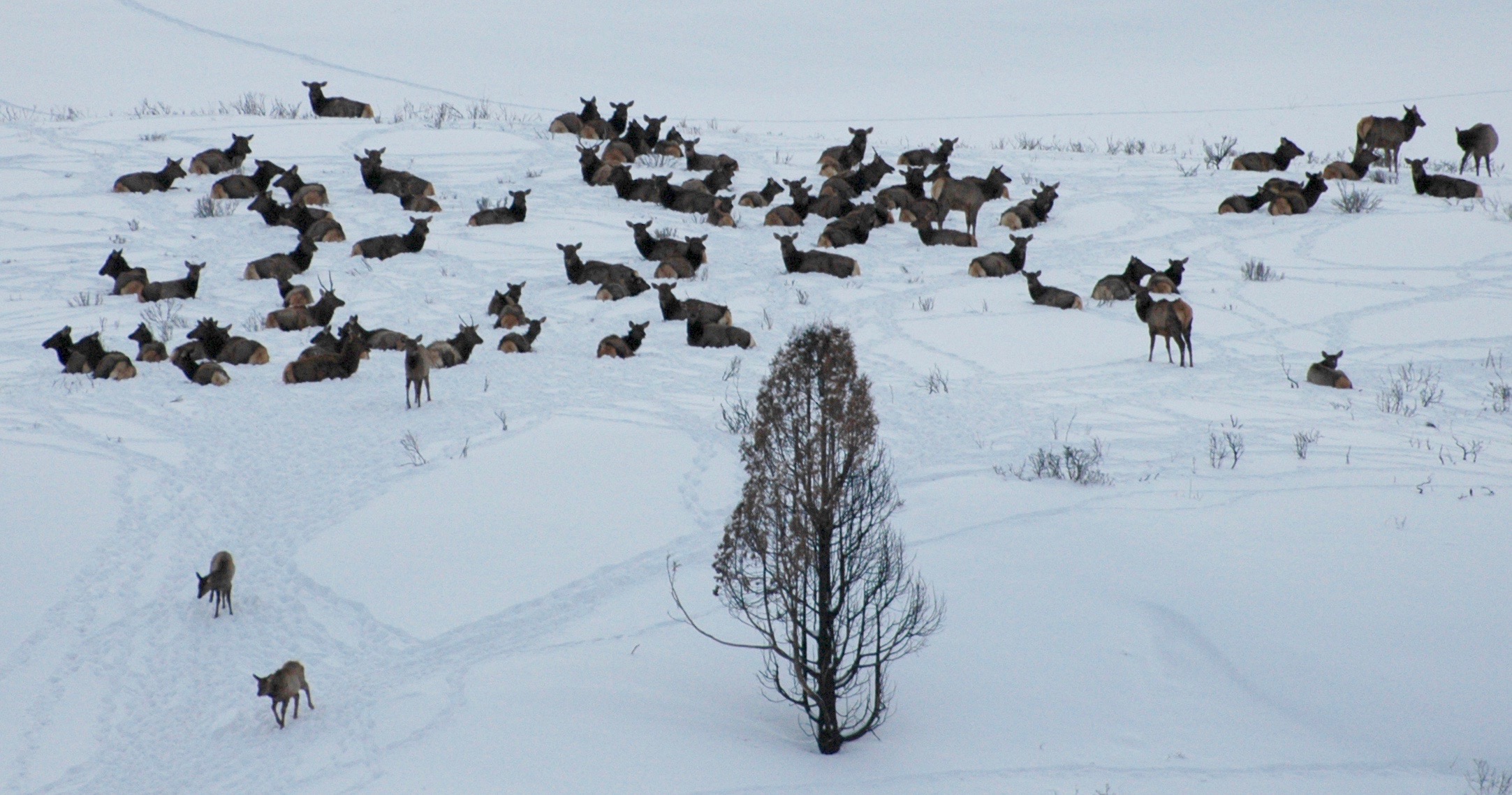One of the reasons that we all enjoy living in Idaho is that it is common to see wildlife close to where we live. While we all enjoy watching wildlife, especially if it might happen close to our communities, wild animals should not be encouraged to take up residence within towns and neighborhoods.
Wildlife is just that – wild, and it’s everyone’s responsibility to keep them that way. Remember, the privilege of living in, or visiting Idaho comes with the shared responsibility to keep our wildlife wild.
While some might feel the need to feed big game animals for fear they will starve, wildlife is well adapted to survive Idaho’s winters if their winter range habitat is intact and they are left undisturbed. Winter feeding is not the simple act of kindness as many people believe. In fact, it can create a host of unintended consequences for wildlife and people.
When Fish and Game makes the decision to feed big game it is typically done to lure them away from towns, roads, hay stacks or livestock feeding operations.

Elk in a cattle feed line near Bellevue
Feeding wildlife is unnecessary
Deer, elk, pronghorn and moose have adapted to survive throughout the year by migrating between summer and winter range. Vegetation such as bitterbrush and sagebrush found on big game winter range is an especially important food source for these animals during the winter months.
Big game animals rely almost exclusively on fat reserves accrued throughout the summer and fall to survive the winter months when forage is limited, inaccessible or poor quality. If an animal enters winter with lots of fat it will have a better chance of survival. Food alone does not prevent animals from losing body condition, even when their preferred natural forage such as bitterbrush and sagebrush is available. Perhaps even more important than food is that animals are allowed to rest undisturbed. It is not unusual for a deer or elk to stay in a fairly small area throughout the winter to avoid expending energy moving through deep snow. This is why people can be far more helpful to wildlife by leaving them alone, keeping dogs on leashes, and carefully choosing where to recreate.

Elk herd on winter range
While someone may think that their single disturbance won’t impact a deer’s chance of surviving the winter, they often don’t stop to think that someone else disturbed them yesterday, and another group will disturb them tomorrow. It’s the repeated disturbance that will ultimately be the death-knell to big game on their winter range.
Why feeding is discouraged
As a general rule, Fish and Game discourages private citizens from feeding big game for several reasons.
Public safety is a key consideration. Establishing private feeding operations near roads and highways increases the chance of vehicle collisions which can have dramatic and sometimes fatal results to people and wildlife.
Another concern for the safety of the public is that feeding can attract predators like mountain lions. When deer and elk are fed it’s setting the dinner table for lions. As an opportunistic predator, mountain lions may also take other small animals that could include pets or domestic livestock.
Concentrating wildlife at feed sites can increase health problems to the herd. Respiratory infections and other diseases can easily spread among animals that are concentrated around feed sites. It is also common to have a higher incidence of disease, which could include brucellosis or chronic wasting disease, resulting in lower productivity or death in herds that are fed.
Obtaining the correct feed that will actually sustain wildlife can be extremely difficult. Deer will eat hay readily but can actually starve if that is the only feed available. Big game animals are accustomed to natural vegetation and they can have a hard time adapting to the feed people provide. The change from natural to supplemental feeding can cause scours (diarrhea) and feeding a high protein and energy feed can also result in digestive problems, bloat, and potentially death.
Once someone starts to feed a group of elk or deer, the animals must be fed until they are ready to move back to natural forage. Some private feeders may not be prepared to sustain the feeding for weeks, if not months, once they’ve started. And, a feed site might initially attract a few animals, but within weeks there could be significantly more big game animals waiting for their ration of feed. Over years wildlife become habituated to these feed sites and the number of animals visiting these sites can grow exponentially.
Location of a feed site can be a difficult decision. Many factors must be considered since a bad location can lure big game too close to livestock and stored crop operations resulting in severe economic impacts to the local farmer or rancher.
For more information about why feeding wildlife is not an appropriate winter activity contact your local Fish and Game office.

